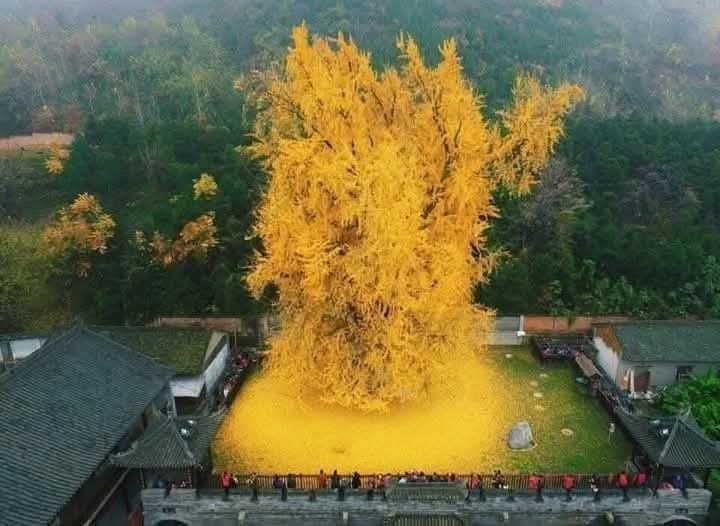Ginkgo Biloba: The Oldest Living Species and Benefits

Introduction
Ginkgo biloba, one of the oldest living tree species, has been used for centuries in traditional medicine. Known for its unique fan-shaped leaves, this remarkable plant is celebrated for its potential health benefits, particularly in enhancing cognitive function and memory. In this blog post, we will explore the various advantages of Ginkgo biloba, its historical significance, and the scientific evidence supporting its use as a natural remedy.
Poem “Ginko Biloba” By Johann Wolfgang

The “Ginkgo biloba” letter, 27 September 1815
“Ginkgo biloba” is a poem penned by the German poet Johann Wolfgang von Goethe in September 1815. It was composed as a gesture of friendship towards Marianne von Willemer and was later included in his collection titled West–östlicher Divan (West–Eastern Divan), published in 1819. In subsequent publications, Goethe opted to use “Gingo” instead of “Ginkgo” to soften the harsh sound of the letter “k.”
The ginkgo (Ginkgo biloba) is often referred to as a living fossil, with its ancestors dating back to the Permian period, around 270 million years ago. Its closest living relatives are cycads, which, like G. biloba, possess motile sperm. This characteristic is considered a primitive trait among green plants, also found in many non-seed plants like ferns, mosses, and green algae, which are thought to be the ancestors of land plants. Unlike all other seed plants, only ginkgo and cycads retain this motile sperm, indicating that they share a common ancestor with this trait, having diverged early from other seed plants.
Prehistory
The divergence of ginkgo and cycads is believed to have occurred in the early Carboniferous period. Fossils of Ginkgo with reproductive structures resembling those of modern species first emerged in the Middle Jurassic. The genus then diversified and spread across Laurasia during the Jurassic and Early Cretaceous periods.
However, its diversity decreased during the Cretaceous, leading to the extinction of several species, including Ginkgo huolinhensis. By the Palaeocene, only a few species, such as Ginkgo cranei and Ginkgo adiantoides, remained in the Northern Hemisphere, while a different, less documented form persisted.

Fossil Ginkgo huttonii leaves from the Jurassic of England
Food
In Korea, the flesh of the ginkgo seed is commonly consumed alongside rice. This combination creates a unique dish, where the nutty flavor of the ginkgo adds a distinct taste and texture to the meal. The seeds are often enjoyed for their nutritional benefits and are considered a delicacy in various traditional recipes.
Detailed Content:
- Historical Background of Ginkgo Biloba
- Overview of its origins and traditional uses in Chinese medicine.
- The significance of Ginkgo in cultural practices.
- Health Benefits of Ginkgo Biloba
- Cognitive Enhancement:
- Discussion on how Ginkgo biloba may improve memory and focus.
- Review of studies highlighting its effects on cognitive decline.
- Antioxidant Properties:
- Explanation of antioxidants and their role in protecting brain health.
- Ginkgo’s ability to combat oxidative stress.
- Circulatory Benefits:
- How Ginkgo biloba may improve blood flow and circulation.
- Potential benefits for heart health.
- Forms of Ginkgo Biloba
- Overview of different forms available (extracts, capsules, teas).
- Tips on how to choose the right form for personal needs.
- Dosage and Safety Considerations
Recommended dosages based on research.
Possible side effects and interactions with medications.e
Conclusion
- In conclusion, Ginkgo biloba stands out as a powerful natural supplement with a rich history and numerous potential health benefits. While more research is needed to fully understand its effects, incorporating Ginkgo biloba into your wellness routine may offer cognitive support and enhance overall brain health. Always consult with a healthcare professional before starting any new supplement, especially if you have existing health conditions or are taking medications.
References
- Zhiyan Zhou and Shaolin Zheng (2003-06-19). “Palaeobiology: The missing link in Ginkgo evolution”. Nature 423(423): 82
- “The IUCN Red List of Threatened Species”. IUCN Red List of Threatened Species. Retrieved 2019-08-03.

Post Comment